Last Updated on August 21, 2022
Estimated reading time: 11 minutes
By Dave G. Houser
Some years ago I joined a cruise from New York to Montréal that sailed into Saguenay Fjord. It’s a stunning 65-mile long gorge carved out of the Québec countryside over several ice ages of glacial erosion.
I’d always associated fjords with Scandinavia, Norway in particular, which is home to most of the world’s most renowned fjords. So I was surprised to learn that Saguenay ranks right up there among 38 of the world’s fjords more than 60 miles long.
It boasts some other distinctions as well, one being the southernmost fjord in the Northern Hemisphere. It is also the only navigable and inhabited fjord in North America.
Significant too is its accessibility, both from the St. Lawrence River and by land, located just 135 miles northeast of Québec City.
Returning to Saguenay Fjord
Impressed by the quiet majesty of the steep-walled, 400-foot-deep fjord and its teeming population of beluga whales, I promised myself I’d return one day to explore it further.
That opportunity finally came about last August. It was then when I joined my Canadian lady friend Melinda (aka Mel) in Québec City for a four-day visit to the Saguenay region.
Having the use of a versatile Canadian-made Roadtrek camper van, we planned to combine a couple of nights of camping with stays at two of the region’s most notable hotels.
Our northeasterly course from Québec City, following Routes 138/362/170 alongside the St. Lawrence River through the Charlevoix region en route to the fjord, proved so pleasurable that I really must relate some of our experiences.
Pretty and Historic Baie-Saint-Paul
Baie-Saint-Paul, for example, is a town that’s quite pretty – trés jolie in my limited French. But founded in 1678, it’s historic as well and is one of Québec’s oldest settlements. We found its legacy well preserved in its traditional Québécois architecture of shops, galleries and restaurants. Many of them line its main street, rue Saint-Jean Baptiste.
Continuing along Route 362, aptly known as River Road as it overlooks the St. Lawrence, we slowed the pace to take advantage of viewpoints offering dramatic vistas of the big river below.
Steering toward the precipitous Pointe-au-Pic cliffs at La Malbaie, we soon arrived at our destination for the first evening. It was the majestic Fairmont Le Manoir Richelieu, perched like an ancient castle above the river.
It was built originally of wood in 1899 by Richelieu & Ontario Navigation Co. to accommodate passengers cruising the St. Lawrence on its luxury steamships. Unfortunately, the hotel was destroyed by fire in 1928 and was soon rebuilt of stone to its present configuration.
We enjoyed a late-afternoon round of golf on the resort’s verdant and well-manicured 27-hole course. Later we dined from the delectable Brasserie Française menu at Le Saint-Laurent Restaurant. And, to round out a memorable evening, engaged in some reasonably sensible gaming at the adjacent Casino de Charlevoix.
Saguenay Fjord In All Its Grandeur
Driving east the next morning on Route 138 to Saint-Siméon and then along Route 170 northwest to the village of L’Anse-Saint-Jean, we finally gained our first look at Saguenay Fjord in all its grandeur.
We enjoyed a tasty lunch of home-made barely soup and smoked salmon salads at Restaurant L’Islet overlooking the water. We then made our way across the road to the marina for a much-anticipated cruise on the fjord with Croisières du Fjord.
Our 2 ½-hour voyage offered dazzling views of Capes Trinité and Eternité from which rise some of the fjord’s most impressive cliffs. We also spotted the white blips of cavorting beluga whales, a few seals, cormorants and gulls. Folks with binoculars observed peregrine falcons perched on the cliffs.
Exiting L’Anse-Saint Jean we came upon a covered bridge known as Pont du Faubourg, which was picturesque scene indeed. In fact,it’s so picturesque you’ll find depicted on the back of Canada’s thousand-dollar bill.
Rivière-Eternité in Parc National du-Fjord-du-Saguenay
Just minutes up the road we entered the Rivière-Eternité sector of Parc National du-Fjord-du-Saguenay. There we looked in on the park’s campground, hidden away in the forest. RV sites have water and electric hookups and can accommodate RVs up to 32 feet.
At the Discovery Center visitors can secure trail maps for the park’s extensive network of hiking trails and sign up for a variety of ranger-guided experiences. They including sea kayaking, Zodiac boating, sailing or climbing on the park’s three new Via Ferrata courses.
Here, thrill-seekers can edge along sheer-walled escarpments above the fjord aided by steel handholds and foot pegs—all under the watchful eye of experienced guides.
We took a short hike and then settled down on the shore below the Discovery Center to simply absorb the majesty of the fjord and surrounding cliffs.
Musée du Fjord in La Baie
Next was a visit to Musée du Fjord in La Baie, about 45 minutes beyond the park on Route 170. There we explored the museum’s multi-media exhibits, touch tanks and giant aquarium. We also learned a great deal about the fascinating science of Saguenay Fjord.
La Baie, as its name suggests, sits on a large bay near the terminus of Saguenay Fjord. It is a borough of Saguenay, the region’s largest city, and a busy port. Most cruise ships sailing the fjord dock here for a day of sightseeing. Fortunately it also was home to our campground for the evening.
We were pretty weary when we pulled into Jardin de Mon Père campground. The sight of this park, scenically situated on Rivière à Mars – a popular salmon fishing river – rejuvenated us.
It’s beautifully landscaped and maintained, with loads of amenities, including a sit-down restaurant, rec center with table games and big-screen TV, heated pool, playground and a long list of sports/recreational facilities – from fishing ponds to volleyball and basketball courts.
An Action-packed Day Along the Saguenay Fjord
The next morning we had a hearty breakfast of blueberry pancakes and ham and eggs at the campground restaurant. We then headed out for another action-packed day along the fjord.
Our first stop was at the nearby Air Defence Museum adjacent Bagotville Canadian Air Force Base. This was a museum quite different from most in the region, but interesting nonetheless. It explores Canada’s military aviation history through indoor exhibits and a sprawling outdoor display of fighter aircraft.
Skirting the fjord’s top along the city of Chicoutimi waterfront, we now headed down its opposite side on Route 172. We stopped next at Chevrier du Nord in Saint-Fulgence, a working angora goat farm and atelier. There master artisans and sisters Annie and Lise Pilote weave and knit angora wool into high quality clothing and accessories.
The Popularity of Outdoor Recreation
Just a few miles down the road, we visited Parc Aventures Cap Jaseux, a campground and outdoor recreation center. It was something like the national park we’d seen the day before but on steroids.
Featured activities and facilities include Via Ferrata courses, ziplines, treetop canopy tours, hiking trails, sea kayaking and more. There’s no RV camping here, but there are some intriguing and truly creative rental alternatives. There are such as geodesic domes and “suspended spherical tree houses” that resemble mini space capsules.
A wild and crazy place this one – but it underscores the popularity of outdoor recreation and adventure-related activities in the Saguenay region.
Lunchtime found us in Sainte-Rose-du-Nord, a tiny village of about 400 residents but with a big reputation for charm. Nicknamed La Perle du Fjord (the fjord’s pearl), it nestles on the shores of a rocky inlet. As we dined at a quayside café we watched sailboats come and go and folks picking their way along a granite ledge for a better view of the fjord.
Baie Sainte-Marguerite
Continuing our southeasterly course along Route 172, we watched for the entrance to the Baie Sainte-Marguerite sector of Parc National du-Fjord –du-Saguenay where we’d tie up for the night.
It’s a sister park to the Rivière-Eternité sector we’d previously visited. But this one was just finishing construction of its RV campground, providing dozens of sites with electricity and water. The campground also features several “huttopias.” They are innovative tent-like structures permanently affixed to platforms and equipped with beds, basic furniture and propane heaters and stoves.
Next morning, we dropped by the park’s Discovery Centre for a look at its exhibits. Most of them focusing on beluga whales, which frequent the inlet where the Rivière Sainte-Marguerite flows into the fjord. We strolled the shore below the center in hopes of spotting some, but none chose to show themselves on this morning.
A Pleasant Surprise Ending Along the Saguenay Fjord
Our fjord-circling adventure came to a pleasantly surprising end with a visit to Tadoussac. It’s a village often described as the most beautiful in all of Québec. And it’s sublimely situated at the confluence of Saguenay Fjord and the mighty St. Lawrence.
Walking along its busy harbor and sparkling bay beyond, we came upon some of Tadoussac’s landmarks. They alerted us to its extraordinary history.
Jacques Cartier was the first European to set foot here in 1535. What is now Tadoussac was settled as a trading post in 1600 – eight years before the founding of Québec City. That makes it the oldest continuously inhabited European settlement in Canada.
Reminders of the village’s long and important history include a replica of that 1600 fur trading post. There’s also North America’s oldest wooden church (1747) and the massive 1864 Victorian-style Tadoussac Hotel. It’s the latter that helped usher in the modern age of tourism along the St. Lawrence River.
A Spiffy Hotel
We over-nighted at the proud old hotel, still looking quite spiffy with its whitewashed walls, bright red roof, dormer windows and stately cupola. Conditioned by now to the high standards of Québec cuisine, we weren’t surprised that our dinner in the atmospheric 4-diamond Le William Restaurant was excellent –my venison tenderloin topped with black current sauce proving tender and tasty as was Mel’s locally caught halibut steak and asparagus with truffled veal jus.
Later, sipping digestifs in the Le Coquart Lounge, we recalled a story surrounding French navigator Jacque Cartier’s connection with the great fjord.
On his second voyage up the St. Lawrence in 1536, Cartier described the Saguenay Fjord and being told by Iroquois Indians, native to the region and who held a profound reverence for the fjord, that deep within it existed the Kingdom of the Saguenay, inhabited by blond men rich with gold, jewels and furs. Intrigued, of course, Cartier was intent on exploring the fjord but never made it back to seek out its reported riches.
While the old Iroquois legend has, of course, been dispelled as myth, Saguenay Fjord has continued through the centuries to elicit the awe and wonderment of all who come to see it.
You may also enjoy: A Bike Tour of Quebec’s Eastern Townships / A Tour of Quebec City, Canada’s Old World Treasure / Québec’s Idyllic Île d’Orléans
If You Go:
Tourisme Québec
https://www.quebecoriginal.com/en-us
Tel: (877) 266-5687

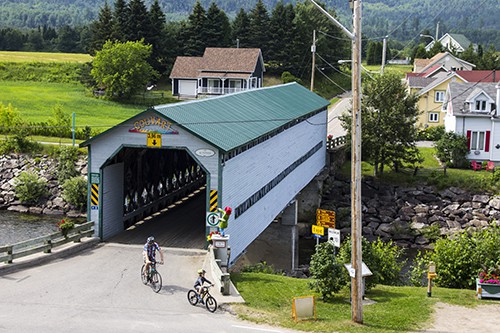
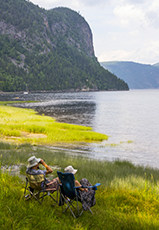
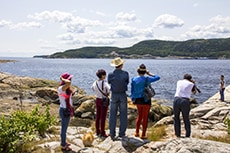
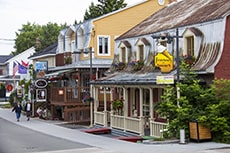
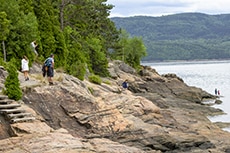
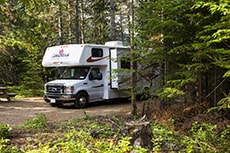
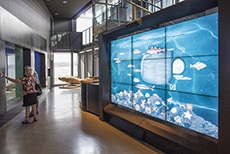

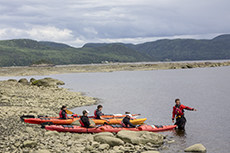

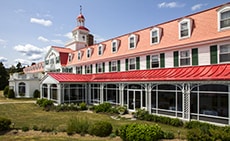
Leave a Reply